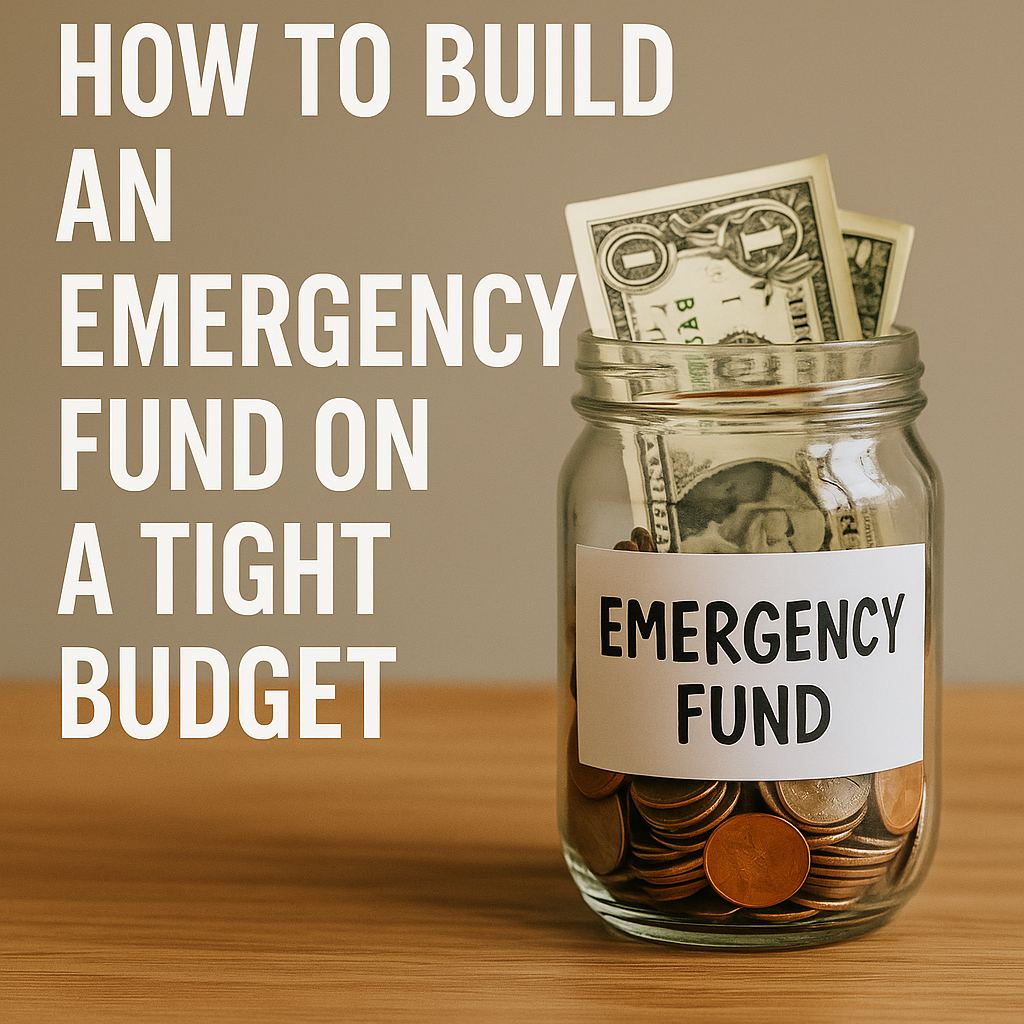Saving Matters (Even When Money Is Tight)
An emergency fund is one of the most powerful tools in personal finance. It gives you peace of mind, financial flexibility, and the ability to handle life’s surprises without going into debt. But building one can feel impossible when your budget is already stretched thin.
The good news? You don’t need thousands of dollars to start. Even saving a little at a time can grow into a strong safety net. Here’s how to build an emergency fund — even on a tight budget.
Set a Realistic Starting Goal
You don’t need $10,000 right away. Start small and achievable. A good first target is $500 to $1,000. This amount can cover many common emergencies like car repairs, medical co-pays, or an unexpected bill.
Once that’s in place, aim for three to six months of essential expenses over time.
Break it down into manageable chunks:
- $10 per week = $520 in one year
- $5 every other day = $900+ in one year
The key is to start.
Track Every Dollar You Spend
When money is tight, every cent matters. Tracking your spending shows where your money goes and where you can save. Use apps, spreadsheets, or even paper.
Look for small leaks:
- Unused subscriptions
- Frequent takeout
- Impulse purchases
- Convenience fees
Even trimming $2–$5 from a few categories can free up money to save.
Make Saving Automatic
Automation is your best friend. Set up a recurring transfer from your checking account to a dedicated emergency savings account every payday — even if it’s just $10.
When saving happens automatically:
- You don’t forget
- You’re less tempted to spend it
- It becomes a habit
Out of sight, out of mind — but growing in the background.
Treat It Like a Non-Negotiable Bill
Pay yourself first. Just like rent or electricity, treat your emergency fund as a bill that must be paid. Prioritizing savings helps shift your mindset from “if I have money left over” to “this is important.”
Even small, consistent deposits build confidence and momentum.
Use Windfalls and Extra Money
Small financial wins can supercharge your emergency fund. Look for:
- Tax refunds
- Rebates or refunds
- Gifts or bonuses
- Selling unused items
Even a few dollars here and there — if saved intentionally — can quickly grow your fund.
Don’t dismiss $20. That’s one emergency co-pay you won’t need to put on a credit card.
Cut One Small Expense Temporarily
Choose one thing to cut for the next 30–90 days:
- Streaming subscription
- Drive-thru coffee
- Delivery fees
- Impulse snacks
Put the saved amount directly into your emergency fund. You might be surprised how little you miss it.
It’s a temporary sacrifice for long-term peace of mind.
Save Unexpected or Irregular Income
If you work gigs, get tips, or do side jobs — put a portion of that money toward your emergency fund.
Try the 50/30/20 rule:
- 50% to necessities
- 30% to variable spending
- 20% to saving
Or if your regular budget is tight, go 80/10/10: 80% bills, 10% spending, 10% saving. What matters is setting aside a portion consistently.
Use a Separate, Inconvenient Account
Don’t keep your emergency fund in your regular checking account. It’s too tempting to “borrow” from it. Instead, use:
- A separate savings account at another bank
- A high-yield online savings account
- A credit union account with limited access
The harder it is to access, the more likely it is to stay intact for real emergencies.
Track Progress Visually
Humans are visual. Seeing your savings grow is motivating. Try:
- A progress bar or goal chart
- A savings jar (for cash-based systems)
- An app with goal-setting features
Celebrate milestones — $100, $250, $500 — and watch your motivation rise with your balance.
Define What Counts as an Emergency
Don’t sabotage your savings. Set clear rules for what qualifies:
- Unexpected car repair? Yes.
- Medical co-pay? Yes.
- 50% off sale at your favorite store? No.
Write down your emergency list and share it with a partner if you’re saving together. Clarity keeps your fund intact.
Give Yourself Grace
Some months will be harder than others. Life happens. You might need to pause savings or dip into the fund before it’s full. That’s okay.
The goal is to build a habit, not be perfect. Restart when you can. Even a partially funded emergency account is better than nothing.
A Strong Fund Starts Small
You don’t need a big paycheck to build security. You need a plan, consistency, and patience. By saving a few dollars at a time, you’re buying future peace of mind and independence.
Start today. Even with $5. Over time, your emergency fund will become a source of comfort — not just cash.
